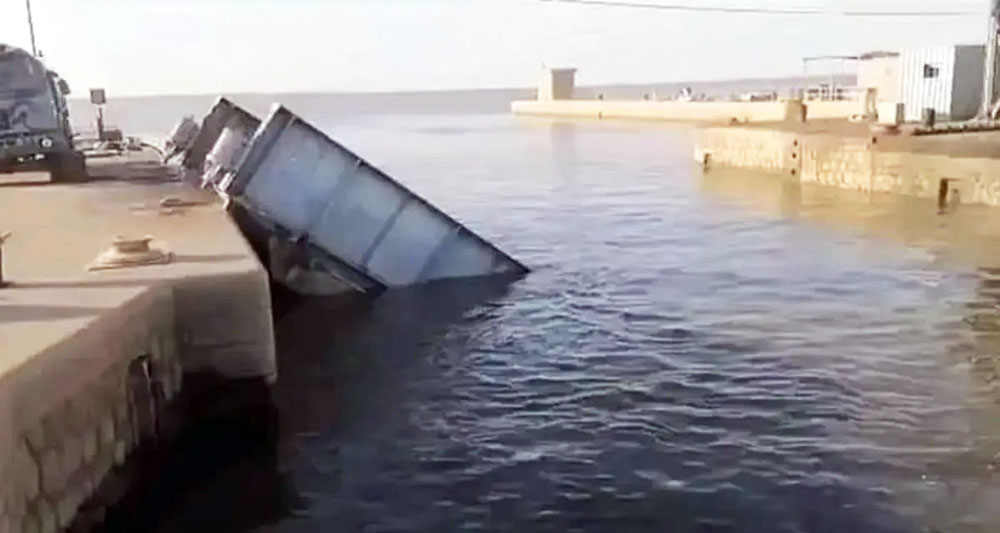
Geologist: Jebel Aulia Dam Not Designed to Withstand Artillery and Airstrikes
Moatinoon
A report published by the Dutch IHE Delft Institute for Water Education, in collaboration with the UN Water and Development Program, has raised alarms about the potential collapse of the Jebel Aulia Dam. The ongoing conflict in Sudan between the Sudanese Armed Forces and the Rapid Support Forces (RSF) has inflicted significant damage on the dam.
The report highlighted that maintenance workers have fled the area, leaving the floodgates in a fixed position, posing risks to the dams structure and endangering millions of people who rely on it for fishing, agriculture, energy, and drinking water.
Researchers from the Dutch institute examined the potential impact of the armed conflict on the dams technical operations and the flood risks associated with it. They noted that water infrastructure is often targeted during wartime.
Military Bases in the Area
Jebel Aulia is strategically significant in the conflict between the Sudanese army and the RSF. Situated south of the capital, Khartoum, it connects the eastern and western banks of the White Nile, making it a key point in military tactics.
The area hosts one of the Sudanese armys historical garrisons in Khartoum, as well as the Najoumi Air Base, one of the armys advanced combat units. The base was established in 1976, relocated to Khartoum in 1991, and later returned to Jebel Aulia to accommodate the expansion of the Sudanese Air Force’s helicopter fleet.
Before the war, the RSF also had a notable presence south of Khartoum, with a camp in Taybah Al-Hassanab within the Jebel Aulia area. Despite being in an open space, the camp was considered a fortified position.
Key Battles
In early August 2023, approximately four months into the conflict, clashes erupted between the Sudanese army and the RSF in the Jebel Aulia area. The army claimed to have inflicted heavy losses on the RSF and accused them of intensifying attacks on civilian areas with mortars, causing significant harm to residents.
In November 2023, the RSF announced it had taken control of the Jebel Aulia garrison and the Najoumi Air Base, a claim denied by the Sudanese army, which asserted its continued control. On November 18, both sides traded accusations of destroying the Jebel Aulia Dam bridge.
In July of this year, the Sudanese Air Force bombed RSF positions in the Jebel Aulia area, resulting in numerous casualties.
Dam Construction and Technical Risks
The construction of the Jebel Aulia Dam began in late 1933 and was completed in 1937. The site was chosen due to the wide flow of the White Nile, allowing for sufficient openings to pass the river’s discharge, as well as the stable rocky foundation suitable for the dam’s structure.
Geologist Engineer Imad Mohamed Ali noted that the dam was built nearly 100 years ago, before modern advancements in dam construction. He pointed out that the site selection and design did not account for modern geotechnical safety standards.
The dam, with a storage capacity of 3.5 billion cubic meters, extends far south of the Jebel Aulia area, Ali explained to Moatinoon. However, its original purposes have diminished over time, and no additional canals or outlets were built to handle excess water, as seen with the Toshky Canal branching from the Aswan High Dam.
He also highlighted substantial water loss through evaporation, estimated at 2.5 billion cubic meters annually, and the dam’s underutilization in generating electricity, with a capacity of only 30 megawatts.
Ali warned that the dams limestone sandstone structure is vulnerable to deep cracks caused by seismic activity or artillery and airstrikes. This could lead to rock disintegration under water pressure, resulting in the dams collapse.
He emphasized that the dam is not designed to absorb artillery or airstrikes, with the vibrations from shelling posing a significant risk. The suspension of dam maintenance since the conflict began has exacerbated the situation.
Ali predicted catastrophic consequences in the event of the dam’s collapse, including flooding across northern Jebel Aulia, damage to bridges over the Nile, and the displacement of over 10 million residents.
Egyptian Oversight of the Dam
The Egyptian government managed the dam from 1933 to 1977 without interference from Sudanese authorities, even after Sudan’s independence in 1956. The dam served as a secondary water supply for Egypt from 1937 until the completion of the Aswan High Dam in 1971.
Egypt compensated Sudanese residents with £750,000 for the displacement caused by the dam’s reservoir flooding their lands.
The Jebel Aulia Dam is notable as the first dam in the world built in one country exclusively for the benefit of another and the first constructed on the White Nile, the second-largest tributary of the Nile.

